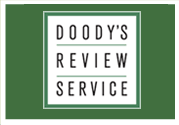|
|
|
 Score: 93
Score: 93 |
 |
| Control of Communicable Diseases: Laboratory Practice |
 |
ISBN: 978-0-87553-285-1,
750 pages,
Soft Cover
ISBN-10: 0-87553-285-3 |
 |
| Copyright: |
2019 |
 |
| Edition: |
1st |
 |
| Editor: |
Wilcke, Burton W., Jr., PhD; Heymann, David L., MD |
 |
|
Specialties:
|
Infectious Disease
, Laboratory Medicine
, Public Health |
 |
| Publisher: |
American Public Health Association |
|
800 I Street, NW |
|
Washington, DC 20001 |
|
UNITED STATES |
|
P: 888-320-2742
F: apha@ware-pak.com |
|
http://www.aphabookstore.org |
 |
| List Price: |
$109.00 |
 |
| Google: |
|
|
 |
|
|
|
|
At A Glance
|
Laboratory Practice is a new complement to the Control of Communicable Diseases Manual, a book published by APHA Press for over 100 years and also the primary resource for disease control specialists. This new book addresses the laboratory aspect of disease control and prevention while presenting the material in an easy-to-use format. Laboratory Practice gives an overview of the latest laboratory procedures for each disease, as well as information on laboratory safety practices, the critical role of quality assurance in all testing and the importance of laboratory informatics and rapid reporting processes. With in-depth detail for each disease, this is a must-have for all laboratory scientists, epidemiologists and others involved with communicable disease control. Laboratory Practice supports both planning and response for disease control. Learn more and order here
|
|
Reviewer:
|
Valerie Ng,
PhD MD
(Alameda County Medical Center/Highland Hospital)
|
 |
|
Range
|
Question
|
Score
|
| 1-10 |
Are the author's objectives met? |
10 |
| 1-10 |
Rate the worthiness of those objectives. |
10 |
| 1-5 |
Is this written at an appropriate level? |
5 |
| 1-5 |
Is there significant duplication? (1=significant, 5=insignificant) |
4 |
| 1-5 |
Are there significant omissions? (1=significant, 5=insignificant) |
4 |
| 1-5 |
Rate the authority of the authors. |
5 |
| 1-5 |
Are there sufficient illustrations? |
N/A |
| 1-5 |
Rate the pedagogic value of the illustrations. |
N/A |
| 1-5 |
Rate the print quality of the illustrations. |
N/A |
| 1-5 |
Are there sufficient references? |
5 |
| 1-5 |
Rate the currency of the references. |
4 |
| 1-5 |
Rate the pertinence of the references. |
4 |
| 1-5 |
Rate the helpfulness of the index. |
4 |
| 1-5 |
If important in this specialty, rate the physical appearance of the book |
N/A |
| 1-10 |
Is this a worthwhile contribution to the field? |
10 |
| 1-10 |
If this is a 2nd or later edition, is this new edition needed? |
N/A |
|
 |
|
Reviewer:
|
Valerie Ng,
PhD MD
(Alameda County Medical Center/Highland Hospital)
|
 |
|
Description
|
| This book, intended to complement the renowned Control of Communicable Diseases Manual, 20th edition, Heymann (American Public Health Association, 2015), focuses on the "detailed accounting" of laboratory practices essential to the control of communicable diseases. |
 |
|
Purpose
|
| The purpose is to provide a guide to laboratorians working in different settings to "review their capability and capacity" regarding specific communicable diseases. These very worthy objectives are spectacularly met by this book. |
 |
|
Audience
|
| The intended audience is laboratorians, epidemiologists "and others involved with communicable disease control." The latter category is quite broad and would include infectious disease specialists, primary care providers, clinical pharmacists, or any healthcare professionals interested in global medicine and communicable diseases (e.g., nurses, other allied health providers, medical students, etc.). This book definitely meets the need of the intended audience and the authors are recognized experts. |
 |
|
Features
|
| This is an absolutely fabulous book. It is a 1.5-inch-thick pocket-sized softcover book (for really deep pockets). One concise 93-page introductory section incorporates a world-class exposition of laboratory safety, quality management systems, informatics, methodology, transport, and outbreak response -- all presented from a mind-expanding global perspective. The subsequent 650 pages contain an alphabetical listing of communicable diseases. Each disease is presented in a standard, concise, and clear format spanning clinical features, laboratory diagnosis, laboratory capability, non-human hosts(!), requirements for laboratory safety, specimens, testing, reporting, referral, and special considerations. For experienced practitioners this is the book you want to peruse in a few hours to complement your existing knowledge. For novices, each disease category is a satisfying "nugget" for building your fund of knowledge. The book is all text and has no diagrams or photomicrographs. The index is very helpful for diseases not listed separately (e.g., cysticercosis is discussed with tapeworms and not as a separate disease category). |
 |
|
Assessment
|
| This is the first attempt at a laboratory-focused companion to the CCDM and it is superb. Get it. |
 |
|
|
|
|
|
|
|
